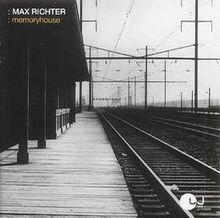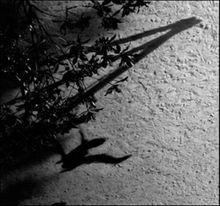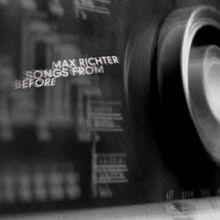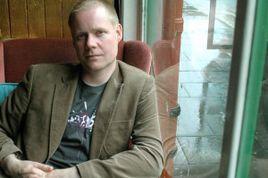人物經歷
Max Richter出生於德國,幼年時移居英國。並在愛丁堡的皇家音樂學院接受了傳統音樂教育。成年後的經歷使他成為一位出色的鋼琴家和作曲家。並一直致力於前衛的試驗型音樂。將電子與環境音樂結合再融入古典音樂進行創作。熱衷於將不同類型的音樂交匯互通。
目前活躍於英國的Max Richter,紮實的學院訓練讓他熟悉西方從古典到現代大師們的音樂表現手法(師承Luciano Berio,並深受Xenakis影響),卻同時樂於張開耳朵開放心靈接觸學院圍牆外廣闊無邊的音樂世界,如果你問他最早的音樂回憶,他會告訴你:「巴哈的音樂;波里尼(Maurizio Pollini)演奏的蕭邦;Pink Floyd的Interstellar Overdrive;還有被Beatles的Abbey Road 震懾;史特拉汶斯基的“春之祭”;Philip Glass的“'Music with Changing Parts”;以至龐克經典The Clash...」
Max Richter的音樂一向離不開文學,第一張個人專輯《Memoryhouse》歷經十八個月沈澱,從想像與真實的事件、喬哀思、約翰‧凱吉與波赫士的作品汲取靈感,運用鋼琴、大中小提琴,引領出扣人心弦、低調迷人的主旋律,伴隨混沌夢幻的電音聲響、吟白與隨機的田野錄音手法,還有那充滿靈性與迷離的管風琴聲,經過精心布局,產生出一種獨特的詩意與張力。04年的《The Blue Notebooks》邀請Tilda Swinton吟誦卡夫卡與米沃什的作品,而在第三張專輯《Songs from Before》當中,則有Robert Wyatt吟誦村上春樹作品,音樂依然在深具穿透力的沈靜氣質中逐漸起伏,在古典與前衛;文學與音樂;具像與抽象;失落與希望;幽暗與光明之間..
作品
回憶屋
專輯英文名: Memoryhouse
 Max Richter
Max Richter發行時間: 2002年05月27日
地區: 英國
This album defies categorisation. It breaks down the barriers between genres and should simply be classified as great music. In this respect Max Richter should be considered along side the likes of Nitin Sawhney. There are moments in this album where I found myself moved to tears as in the extraordinary track Sarajevo which builds and builds until the full tragedy of that war torn city seemed to leap out and enfold me. Some tracks wash over you like a refreshing stream a bit like the best Cafe Del Mar chill out albums and then there's the kind of stuff that you might find in a tense pacy thriller; film makers would die for it.
Memoryhouse comes from the soul, and it certainly stirs the soul when you listen to it. The more you play it the deeper it seems to go. It's my favourite new album and well worth buying. -- D. Scheinmann,
專輯曲目:
01. Europe, After The Rain. . . . . . . . . .6:13
02. Maria, The Poet (1913). . . . . . . . . .4:47
03. Laika's Journey . . . . . . . . . . . . .1:30
04. The Twins (Prague). . . . . . . . . . . .1:58
05. Sarajevo. . . . . . . . . . . . . . . . .4:03
06. Andras. . . . . . . . . . . . . . . . . .2:42
07. Untitled (Figures). . . . . . . . . . . .3:27
08. Sketchbook. . . . . . . . . . . . . . . .1:54
09. November. . . . . . . . . . . . . . . . .6:21
10. Jan's Notebook. . . . . . . . . . . . . .2:41
11. Arbenita (11 Years) . . . . . . . . . . .7:04
12. Garden (1973) / Interior. . . . . . . . .3:24
13. Landscape With Figure (1922). . . . . . .5:14
14. Fragment. . . . . . . . . . . . . . . . .1:26
15. Lines On A Page (One Hundred Violins) . .1:22
16. Embers. . . . . . . . . . . . . . . . . .3:38
17. Last Days . . . . . . . . . . . . . . . .4:18
18. Quartet Fragment (1908) . . . . . . . . .3:02
藍色筆記
專輯英文名: The Blue Notebooks
 Max Richter
Max Richter發行時間: 2004年
地區: 德國
在這張專輯中,“The Blue Notebooks”是一張類似日記形式的作品,不過這是以純音樂為主的日記。樂段之間加插了數段模仿用打字機打日記人聲誦讀的片段,當中的文字取自捷克作家卡夫卡的“The Blue Octavo Notebooks”,與及捷克詩人米洛茲的作品“Hymn of the Pearl”和“Unattainable Earth”。
要逐曲細談“The Blue Notebooks”,恐怕是多此一舉的做法。唱片的音樂都以鋼琴和弦樂器為主導,滲出陣陣古典的氣息,但偶爾加入的點點電音處理和誦讀的日記片段,卻令音樂感覺毫不古舊,反而處處流露出非常自然和親切的美感。若要找一個風格相似的單位,來自Touch Records的冰島音樂人Johann Johannsoon那張“Englaborn”便有著接近的自然聲音,只是Max Richter的音樂更見簡約和環境化。
唱片中的歌曲都以相似的簡約手法寫成,Philip Glass、Steve Reich等等人物對Max Richter的影響是明顯的。一直聆聽這張唱片,音樂似乎是同一個主題的變奏,又像是日復一日悠閒生活的縮影。歌曲與歌曲之間銜接順滑,像遠觀海浪起伏,表面看似平淡,但卻足以牽動聽者的情緒,精煉而低吟的樂音中,留有廣闊的空間讓聽者慢慢思考細味。
專輯曲目:
01. The Blue Notebooks (1:20)
02. On The Nature Of Daylight (6:11)
03. Horizon Variations (1:52)
04. Shadow Journal (8:22)
05. Iconography (3:38)
06. Vladimir's Blues (1:18)
07. Arboretum (2:53)
08. Old Song (2:11)
09. Organum (3:13)
10. The Trees (7:52)
11. Written On The Sky (1:39)
Songs from Before
 Max Richter
Max Richter發行時間: 2006年地區: 英國
A couple years back, Max Richter came out of the blue with his The Blue Notebooks album and pretty much knocked me for a loop. A splendid mixture of modern classical and electronic music (plus some spoken word bits from Tilda Swinton), the release easily made my year-end list and was good enough that it made me seek out his more elusive debut album to get a little more background on his artistry. As it turns out, Richter is more than just an accomplished solo artist, having worked with everyone from the Future Sound Of London to Roni Size and even Vashti Bunyan on production and collaboration.
Songs From Before is his latest full length album and it sounds like a very logical sequel to The Blue Notebooks. In fact, it has so much in common with that release that it feels more like the second chapter in a larger over-arching saga, than a large step forward into new territory. The lush string arrangements are back, along with some spoken word bits that filter in (Robert Wyatt reading short passages from Haruki Murakami this time out). If there's any difference, it's that more overt electronics play less of a roll in this recording, although Richter does incorporate more lo-fi electronic touches through the use of shortwave radio noises.
The simply titled "Song" opens the album on a strong note, as some repetitive organ melodies mix with some subtle strings while distant percussion sends deep reverberations through the mix. "Flowers For Yula" opens with some disembodied radio chatter and a few passages from Wyatt before slow swells of strings rise up from the crackling depths and crest without ever getting very loud. "Harmonium" may very well be the most haunting track on the entire release, again starting with a couple evocative sentences from Wyatt before some deep, filtered swirls of what may very well be the title instrument are offset with sparkling bells and chimes. It's a gorgeous track that works wonders at high volumes.
The latter two-thirds of the album is a bit more spotty, and after listening to the release a bunch of times, I still have a hard time pin-pointing why. There are a lot of shorter tracks (like "Ionosphere" and "Lullaby") that add nothing to the release, while a familiar melodic theme is used in "Autumn Music 1," "Autumn Music 2," and the album closer of "From The Rue Vilin." Considering Songs From Before is only about thirty-seven minutes long, it's probably safe to say that the effort suffers a bit from being really good on the front end and then not offering up as much in variety from there out. Richter is still a heck of a composer, and the twelve-track release is always pretty at the very least, but unfortunately it seems like a slight step backwards considering his previous album. -- almostcool
專輯曲目:
01. Song (4:12)
02. Flowers For Yulia (6:50)
03. Fragment (1:41)
04. Harmonium (4:23)
05. Ionosphere (1:25)
06. Autumn Music 1 (3:54)
07. Time Passing (1:51)
08. Sunlight (5:35)
09. Lullaby (0:53)
10. Autumn Music 2 (3:49)
11. Verses (1:43)
12. From The Rue Vilin (1:02)
4.24 Postcards in Full Colour
 Max Richter
Max Richter發行時間: 2008年09月23日出版者: Fatcat Records
Max Richter
24 Postcards In Full Colour
Following eighteen months after Edinburgh-based pianist / composer Max Richter’s last album comes the release of the gorgeous, intriguingly framed ’24 Postcards In Full Colour’. Richter’s fourth album is a dazzling conceptual exercise of great beauty and emotional resonance. Certainly his most concise, ’24 Postcards…’may also be Max’s most coherent and compelling work to date. Beautifully played, richly textured and detailed, the album foregrounds Max’s sheer class as a composer and producer.
An attempt an exploration of the ringtone as a vehicle for music performance , ‘24 Postcards…’ is an experimental work made up of 24 classically-composed ringtones, set to be premièred in various gallery spaces. The première is intended to be in the form of a series of installations where pre-registered audience members switch on their phones to receive SMS messages, each message alert playing back one or more of the tracks, so making up the performance. In tandem with this release, will be a micro-website hosting 24 photographic images, one accompanying each track. As Max explains: “Thinking about how we listen to music today, I wondered why it is that ringtones have so far been treated as unfit for creative music… Who says ringtones have to be bad?.. It’s like saying LPs or CDs are bad – its just a medium….”
“Because the piece is a collection of tones, where I have no control of the order, I made a structure that holds together by use of shared material – like a cloud of pieces, or a handful of confetti, or a constellation of fragments – to be navigated as you like…” Max views the writing process in similar terms - shuffling basic elements into new constellations. The palette Max limited himself to consists of string quintet; solo piano; 16 track 2 inch tape; transistors; found shortwave radio; vinyl clicks, dust, scratches and rumble; and acoustic guitars. The players on the album are Louisa Fuller (violin),Robert Mc Fall (violin), Natalia Bonner (violin), John Metcalfe (Viola), Ian Burdge (Cello), Chris Worsey (Cello), Sua Lee (Cello), Preston Reed (Guitar), and Richter himself on piano.
Fragmentary and partial by nature, these 24 brief tracks work as a varied collection of evocative miniatures - each offering a glimpse into potentially much larger pieces. The longest track here is just under three minutes, whilst the majority clock in at around just sixty seconds. Each bearing its own particular weight and measure, these haunting vignettes come across as a series of sketches on the (fugitive) nature of time and memory, stitched together to form a series of jump-cuts and foldbacks in time (the album continually reprising itself and filling the listener with a sense of deja-vu).
As though extracting the absolute essence, simple, plaintive piano and string melodies - no excess, no waste, pure concentrate - butt up against passages of rich, borderzone ambience - radio static / voices leaking through dense, shifting drones. At points recalling the likes of Boards Of Canada, Bibio, and Gas (in terms of depth / grain rather than sound or style), at others Minimalism or the Elizabethan instrumental music of Henry Purcell, there’s also something about its nature that brings to mind authors like WG Sebald, Marcel Proust and filmmaker Andrei Tarkovsky.
24張彩色明信片,24種不同的心境,24首曲目,於是就有了這張碟,Max Richter的《24 Postcards in Full Colour》,但它的封套怎么又偏偏是黑白的呢?
這張唱片集合了24首動情的器樂小品,很少見到這種形式的專輯,它就像一本散文集,沒頭沒尾,每一首都是一個事件,截取了生活里不同的24個斷面進行細緻描繪。
額們老師講滴敘事方式,有一些是直線式,有一些就是這樣的抓住一些特徵點進行深入描述的。每首的編曲都很簡單,有幾首是純鋼琴小品,還有幾首純提琴小品,但是都有飽滿的感情,都很動人。在我這裡這張專輯永遠不會有不合時宜的時候,不論在何種心境下我都能靜下來仔細聽它。
——zombier
專輯曲目:
(01) The Road Is A Grey Tape
(02) In New England
(03) This Picture Of Us. P.
(04) Lullaby From The West Coast Sleepers
(05) When The Northern LightsJasper And Louise
(06) Circles From The Rue Simon-Crubellier
(07) Cascade NW by W
(08) A Sudden Manhattan Of The Mind
(09) In Louisville At 7
(10) Cathodes
(11) I Was Just Thinking
(12) A Song For HFar Away
(13) Return To Prague
(14) Broken Symmetries For Y
(15) Berlin By Overnight
(16) Cradle Song For A (Interstate B3)
(17) KierlingDoubt
(18) From 553 W Elm Street, Logan, Illinois (Snow)
(19) Tokyo Riddle Song
(20) The Tartu Piano
(21) Cold Fusion For G
(22) 32 Via San Nicolo
(23) Found Song For P.
(24) H Thinks A Journey

